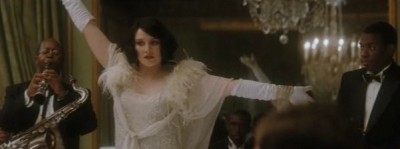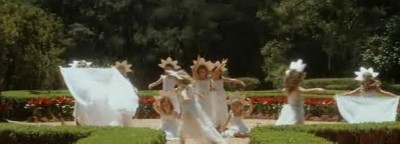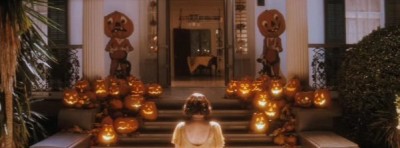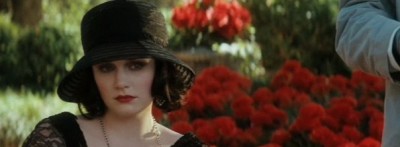By: debbie lynn elias
 Tennessee Williams is long and widely considered to be one of, if not the most celebrated and important American playwright of our time. His collected works are prolific and memorable, taking not only the stage by storm, but the silver screen as well. Celebrating the grandeur, pomp, and dare I say, arrogance, of predominantly the post-reconstruction South and particularly the women of the day, his 1920’s characters are indelibly etched in our minds. Be it Blanche DuBois, Amanda Wingfield, Catherine Holly, Violet Venable, Karen Stone, Maggie the Cat, or even Stanley Kowalski, there is something about Williams’ creations that resonate within each of us, so much so that productions of his work are done over and over by various artists, all clamoring to bask in the glow of a Williams character, to inhale the life of Williams’ very words. And for many, including myself, it was long believed that we had been privy to every one of his writings, seeing each in one of its various interpretations, be they for the stage, screen or both. But, as I learned, there is still much more of Williams to be discovered. Enter director Jodie Markell, a self-proclaimed aficionado on Williams and his works. Herself believing she had read everything and/or seen everything Williams (17 feature films alone have been based on his plays), imagine her joy when, in acting school, a teacher showed her a collection of Williams screenplays, one of which was THE LOSS OF A TEARDROP DIAMOND. Written by Williams at the height of his career in the 1950’s, THE LOSS OF A TEARDROP DIAMOND was written as a screenplay, a rarity. Immediately on reading the script, Markell knew she had to be the one to see the project through. A Southern woman herself, she felt the organic Southern nature of the story and a special connection with its heroine, Fisher Willow. Feeling a “calling to reclaim Williams and to bring his visually poetic world to the screen with as much vibrancy and authenticity” as she could achieve, Markell ultimately achieved her goal, giving the world its first look at what is destined to itself be interpreted many times over the years, THE LOSS OF A TEARDROP DIAMOND.
Tennessee Williams is long and widely considered to be one of, if not the most celebrated and important American playwright of our time. His collected works are prolific and memorable, taking not only the stage by storm, but the silver screen as well. Celebrating the grandeur, pomp, and dare I say, arrogance, of predominantly the post-reconstruction South and particularly the women of the day, his 1920’s characters are indelibly etched in our minds. Be it Blanche DuBois, Amanda Wingfield, Catherine Holly, Violet Venable, Karen Stone, Maggie the Cat, or even Stanley Kowalski, there is something about Williams’ creations that resonate within each of us, so much so that productions of his work are done over and over by various artists, all clamoring to bask in the glow of a Williams character, to inhale the life of Williams’ very words. And for many, including myself, it was long believed that we had been privy to every one of his writings, seeing each in one of its various interpretations, be they for the stage, screen or both. But, as I learned, there is still much more of Williams to be discovered. Enter director Jodie Markell, a self-proclaimed aficionado on Williams and his works. Herself believing she had read everything and/or seen everything Williams (17 feature films alone have been based on his plays), imagine her joy when, in acting school, a teacher showed her a collection of Williams screenplays, one of which was THE LOSS OF A TEARDROP DIAMOND. Written by Williams at the height of his career in the 1950’s, THE LOSS OF A TEARDROP DIAMOND was written as a screenplay, a rarity. Immediately on reading the script, Markell knew she had to be the one to see the project through. A Southern woman herself, she felt the organic Southern nature of the story and a special connection with its heroine, Fisher Willow. Feeling a “calling to reclaim Williams and to bring his visually poetic world to the screen with as much vibrancy and authenticity” as she could achieve, Markell ultimately achieved her goal, giving the world its first look at what is destined to itself be interpreted many times over the years, THE LOSS OF A TEARDROP DIAMOND.
The time – the Roaring 20’s. The place – Memphis, Tennessee. The girl – Fisher Willow, a young society heiress who balks at custom and propriety, instead electing to go her own way, rebel against her family’s wishes and internally rage against who and what she is. Society season is setting in and Fisher has no intention of missing out on a single event. Of course, what girl can go to any dance without the proper escort. And for Fisher, thanks to her daddy’s money, that means she can have anyone in the County. But Fisher doesn’t want just anyone. Fisher has her eyes on the prize – Jimmy Dobyne – the handsomest and nicest guy around, who just happens to be penniless and whose father works as a caretaker for Fisher’s father, something that pleases Fisher to no end as it will displease her daddy. Unfortunately for Fisher, Jimmy Dobyne isn’t interested in Fisher which forces her into a business arrangement with him, an arrangement she will live to regret.
Turning heads wherever they go, Fisher’s social life is going along swimmingly, that is until she loses a $5,000.00 teardrop diamond earring, loaned to her for the season by her aunt Cornelia, and in the course of one evening, Fisher’s life and that of everyone around her is turned upside down as deception, back-stabbing and idiosyncratic personalities take hold, forcing Fisher to face her inner most demons and something she fears above all, love and kindness.
Bryce Dallas Howard gives a powerful performance as the emotionally embattled Fisher Willow. Most effective playing the charming southern belle, Howard mesmerizes when having Fisher “perform” for those around her, making it more than enjoyable to watch Howard play Fisher who is essentially playing her friends. Unfortunately, I continually sensed Howard channeling Vivien Leigh’s Scarlett O’Hara or Bette Davis’ Jezebel or Joanne Woodward’s Clara Varner in the THE LONG HOT SUMMER or “Eve” in “The Three Faces of Eve” or even as Amanda in THE GLASS MENAGERIE, and it is this channeling that leads to an erratic performance, not the least of which is the inconsistency of her Southern accent – surprising since Howard’s family hails from the South. When she was being sweet as pie and trying to be demur like a good southern lady, her accent was right on sugary southern, but the minute she got any fire into the character or raised her voice (some of her most dynamic scenes, mind you), the accent waffled and then totally disappeared whenever she was angered or yelling. Very distracting. Visually, though, her transformation into Fisher is stunning and impeccable.
The supporting cast provides some of the film’s finest assets, not the least of which are Ellen Burstyn and Chris Evans. Burstyn could actually grab an Oscar nod for Best Supporting Actress for her role as Miss Addie. She is incredible. Forceful, determined, spirited, the moral compass so to speak of the film (along with Evans’ Jimmy) and a driving force to correct the conscious of Fisher Willow. Her monologues are exquisite. Chris Evans is rock solid and just melts everyone with those blue eyes and eyelashes. Mesmerizing. Easy to see why Fisher would be dead set on having Jimmy as her own if he looked like Evans. You will find yourself sighing more than once as a tuxedoed Evans enters the room.

A real casting surprise and joy is Ann-Margret who is effective but under-used as Aunt Cornelia Fisher, sending her niece out with escort Jimmy Dobyne and then we don’t see her again. Margret, who has appeared in several different roles in various Williams’ works is wonderful here as the stoic, prim and proper Aunt with the teardrop diamonds. I just wish we had seen more of her. And as comes as no surprise, Mamie Gummer (the spitting image of her mother) is entertaining as Fisher’s best friend, Julie, with a lighter emotional role amidst the heavy psychological and histrionic drama of Howard’s Fisher.
Particularly commendable for all of the actors, and particularly Howard, Evans and Burstyn, is the excellence in the execution of dialogue rich monologues. For Howard, “to get to do a piece where the characters get to talk a lot, was really wonderful for me and juicy and exciting. The characters are speaking their mind as opposed to just being an expression, they are actually saying what’s on their mind, something that Tennessee Williams is really famous for. You crave that when you are an actor.”
First time director Jodie Markell’s love of the project and desire to do well by Williams is evident from the opening frame, however, what is also evident is some confusion over whether this is a play or a film. Did Markell want to make a movie or direct a play because by film’s end I’m still not sure what she intended. Given her own theatre background, and the staging of this film, I think she should concentrate on theatre as the theatrical elements are wonderful, albeit misplaced in film. Take a close look at the bedroom scene with Fisher and Miss Addie. Slowly the lights in the bedroom fade and the two are swathed in a spot light which then narrows to just shine on Miss Addie. Totally theatric. Then, a crying Fisher pounding out her aggression on a piano with depressing sonatas – the room lights dim and a spotlight shines on Fisher as she plays. I expect this in a stage production, but not intermingled with straightforward filming. On talking with Markell about these aspects she explains “I never thought of them as theatrical elements but it might translate that way for an audience. I completely think that’s wonderful. But what I thought of it was, I isolated them in a world and lifting up the somewhat poetic dreamlike quality of Williams’ work. That particular scene with Ellen and Bryce…Williams wrote ‘it’s as if a portal opens to another world’ so I wanted to reflect that in the lighting. I also thought this would be great because it can lift us into another dimension because it’s the first time Fisher is able to speak from her heart…I wanted to visually reflect that almost like putting an iris onto them.” And what about original visuals? They say that imitation is the sincerest form of flattery but to duplicate not one scene, but multiple scenes from other films when not a spoof or comedy, for me, shows a lack of imagination on the part of a director. Take for example a shot of Fisher and Jimmy on the levee, a plantation in the offing with the sun rising. Now take a look at the infamous scene in GWTW where Scarlett is standing with her Pa under a tree with Tara in the distance and the sun rising in the east. But for the clothes, we have pretty much the same shot. Same thing with Fisher sashaying in front of the car headlights at the levee. Take a look at Nicole Kidman in Gus Van Sant’s “To Die For.” Same shot. Even similar physical moves by Howard that mimic Kidman. I also noted a minor faux pax with a writing pen of Fisher’s. That particular style had not yet been invented. Despite these disappointments, I am impressed with what Markell has done with the film and am curious to see what she does in the future either with film or if she elects to stay in her comfort zone of theater which I believe to be her true calling.
Where the film really excels is in costuming and production design, both of which are outstanding, and particularly the costuming for Ann-Margret and Bryce Howard. The different eras are reflected beautifully while the party dresses for Fisher are exquisite with the detail and beading. Chrisi Karvonides should be awarded for his work as should Vivian Baker for her great make-up job on Howard, with applause to Emanuel Millar for some great wigs and looks for the ladies. There is no doubt that this aided in transporting one to the South and the sensibilities of the Tennessee Williams’ era. Adding to the beauty of the film is Giles Buttgens’ photography which is outstanding, particularly when capturing the quiet beauty of the antebellum South through Cornelia Fisher’s gardens, which are magnificent, and the post reconstruction era of the 1920’s. The production design of Richard Hoover and David Stein goes far in tacitly defining the characters’ economic class structures and demographics. Sadly, however, the teardrop diamond earrings in the film are not real although Cornelia Fisher’s house is an actual plantation called “Cornelia’s House.”
Complimented by Mark Orton’s wonderful score, from beautiful costumes to exquisite imagery to a first rate cast with a wonderful new indelible character in Fisher Willow, THE LOSS OF A TEARDROP DIAMOND is a newfound Williams work that is not to be missed.
Fisher Willow – Bryce Dallas Howard
Jimmy Dobyne – Chris Evans
Miss Addie – Ellen Burstyn
Cornelia Fisher – Ann-Margret
Directed by Jodie Markell. Written by Tennessee Williams.











